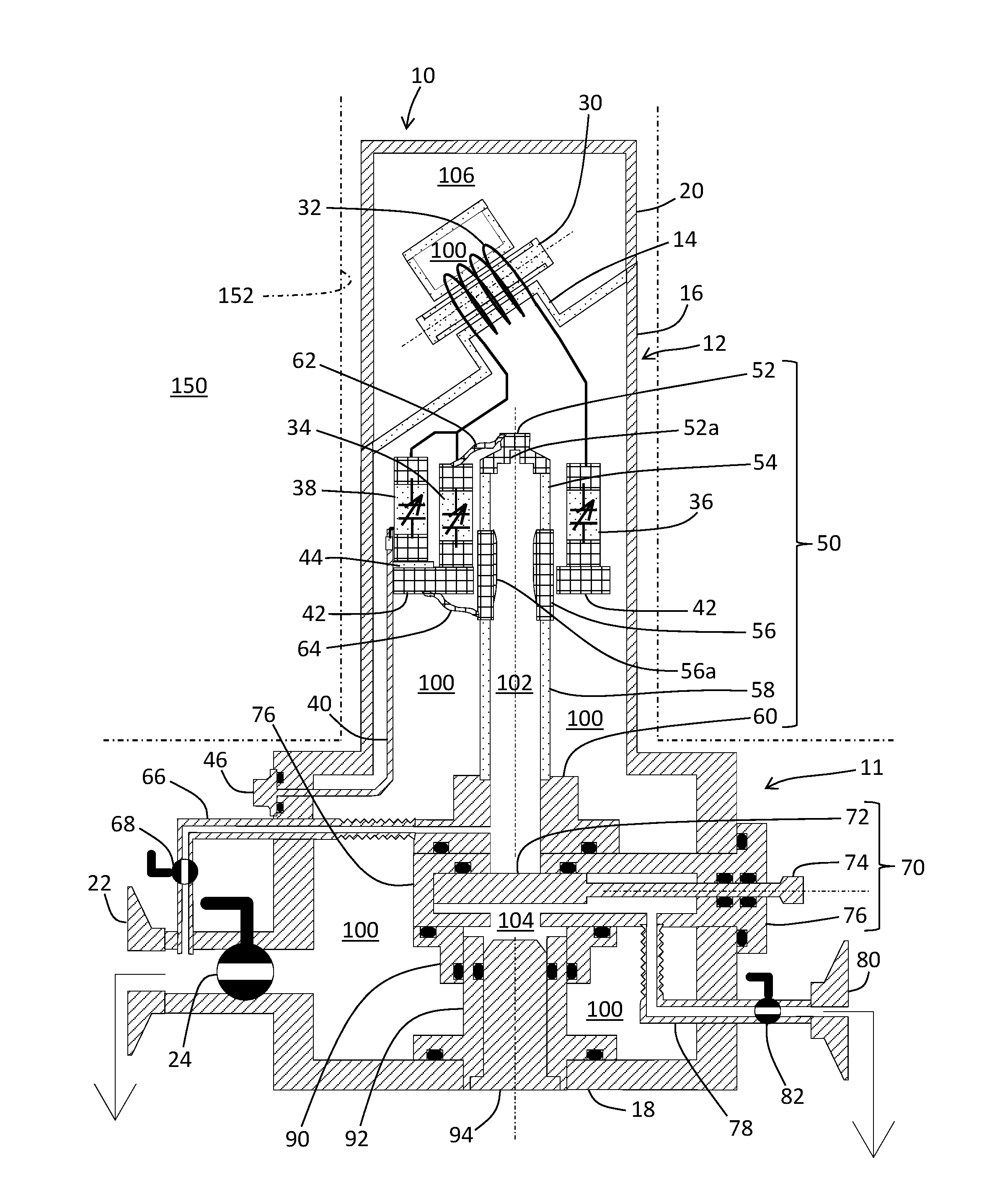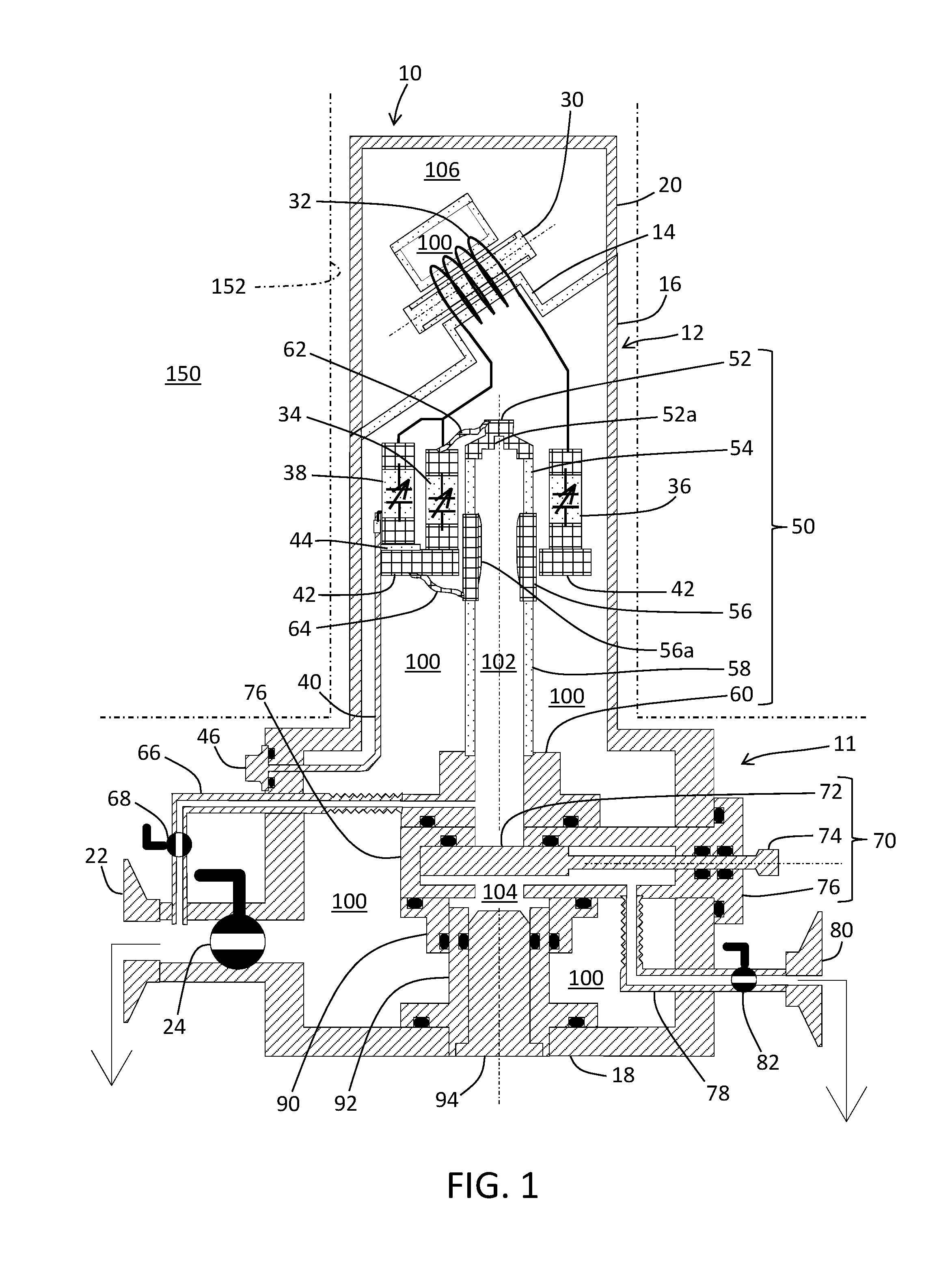NMR Probe
a technology of nuclear magnetic resonance and probe, which is applied in the direction of magnetic measurement, instruments, measurement devices, etc., can solve the problems of limited tuning range that can be handled, 219 cannot handle the large number of nuclear species, and cannot be continuously changed, so as to achieve the effect of changing the tuning range of the detection circui
- Summary
- Abstract
- Description
- Claims
- Application Information
AI Technical Summary
Benefits of technology
Problems solved by technology
Method used
Image
Examples
first preferred embodiment
[0043]FIG. 1 shows an NMR probe (detection system cool-type NMR probe) according to a first preferred embodiment of the present invention. This NMR probe is used, for example, when analyzing a molecular structure of a sample. In the present embodiment, the sample may be any of solid, gas, and liquid.
[0044]The NMR probe according to the first preferred embodiment comprises an insertion section 10 and a lower unit 11. The insertion section 10 has an overall tubular shape extending in a vertical direction, and is inserted into a bore 152 of a static magnetic field generation apparatus 150. The NMR probe comprises an outer container 12, an inner container (container including a tube body 50) provided in the outer container 12, and a tank circuit (detection circuit) having a transmission and reception coil 32. A space inside the outer container 12 is separated by the inner container into a primary airtight chamber 100 and a sub airtight chamber (an upper airtight chamber 102 and a lower ...
second preferred embodiment
[0134]Next, an NMR probe according to a second preferred embodiment of the present invention will be described with reference to FIG. 14. FIG. 14 shows an example of the NMR probe according to the second preferred embodiment. In the NMR probe according to the second preferred embodiment, two tube bodies are placed spatially parallel to each other. With such a configuration, it becomes possible to add two additional members to two locations in the tank circuit from the outside of the NMR probe.
[0135]The NMR probe according to the second preferred embodiment comprises an insertion section 200 and a lower unit 202. The insertion section 200 has an overall tubular shape extending in the vertical direction, and is inserted in the bore 152 of the static magnetic field generation apparatus 150. The NMR probe includes an outer container 212, an inner container (container including a tube body 250) provided in the outer container 212, and a tank circuit (detection circuit) having a transmiss...
PUM
 Login to View More
Login to View More Abstract
Description
Claims
Application Information
 Login to View More
Login to View More - R&D
- Intellectual Property
- Life Sciences
- Materials
- Tech Scout
- Unparalleled Data Quality
- Higher Quality Content
- 60% Fewer Hallucinations
Browse by: Latest US Patents, China's latest patents, Technical Efficacy Thesaurus, Application Domain, Technology Topic, Popular Technical Reports.
© 2025 PatSnap. All rights reserved.Legal|Privacy policy|Modern Slavery Act Transparency Statement|Sitemap|About US| Contact US: help@patsnap.com



